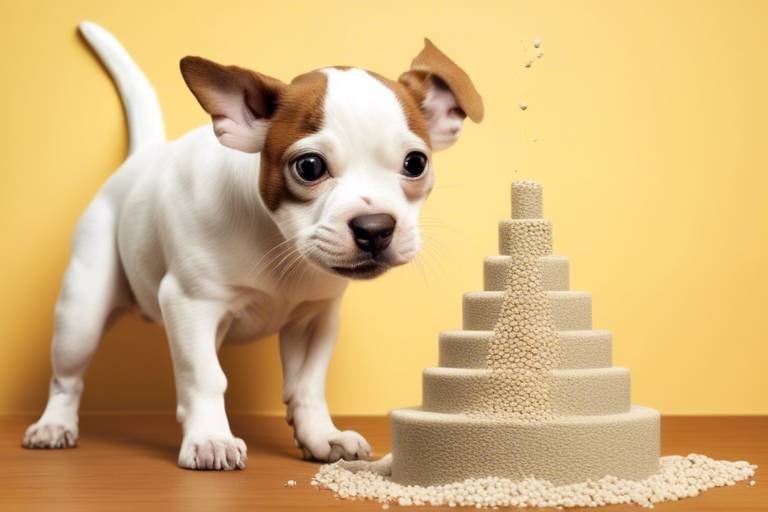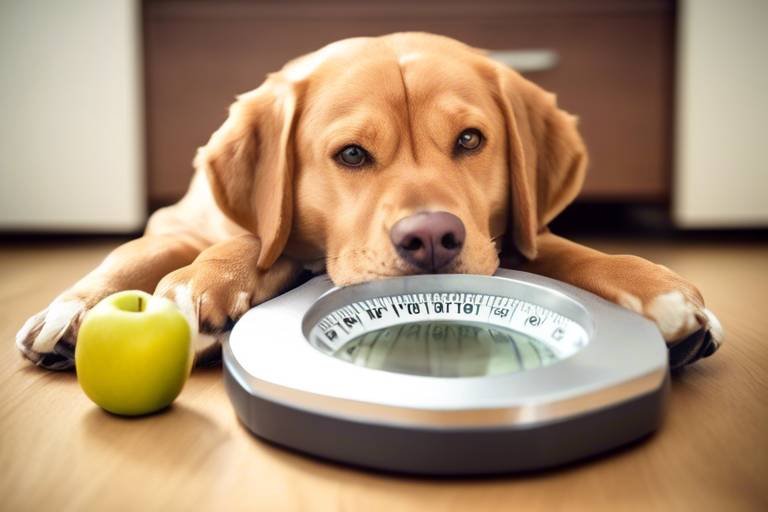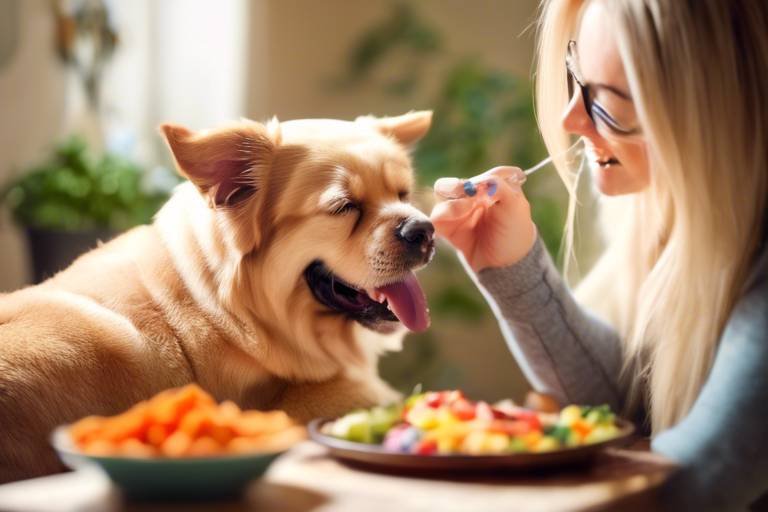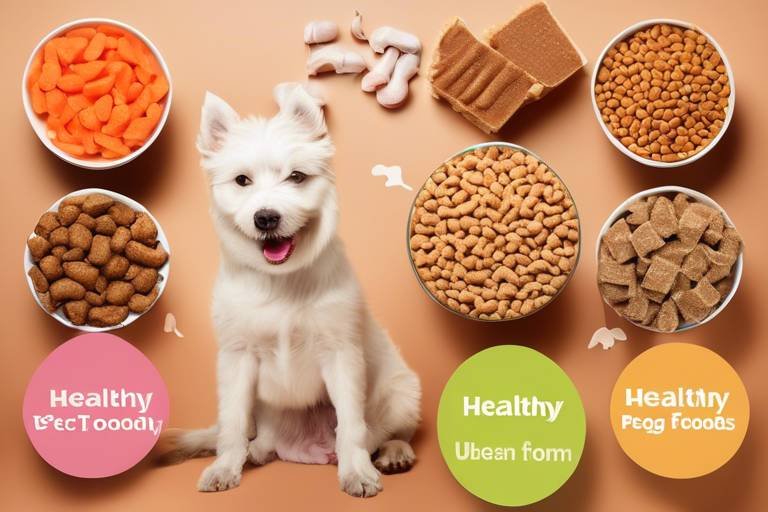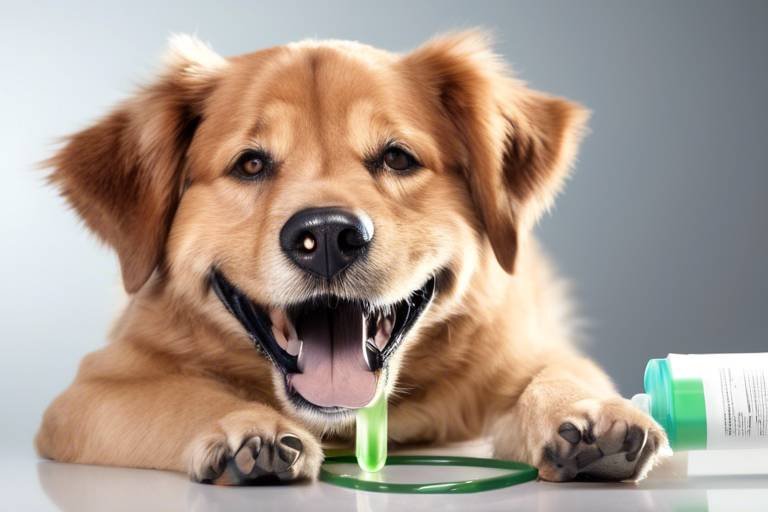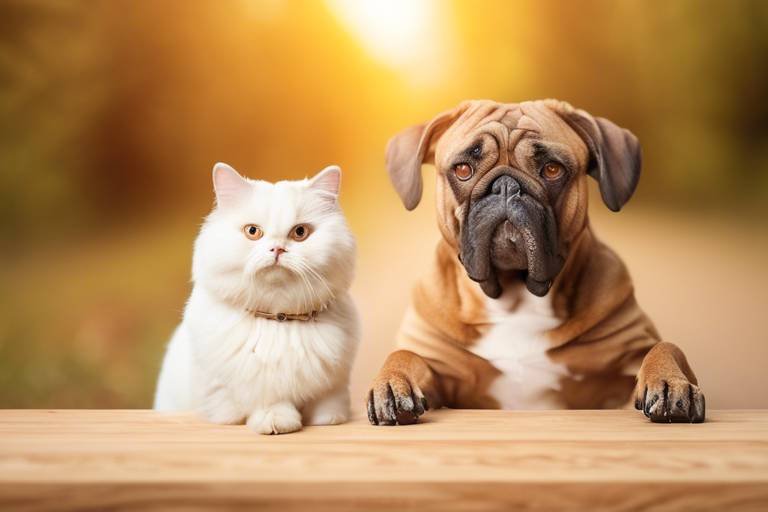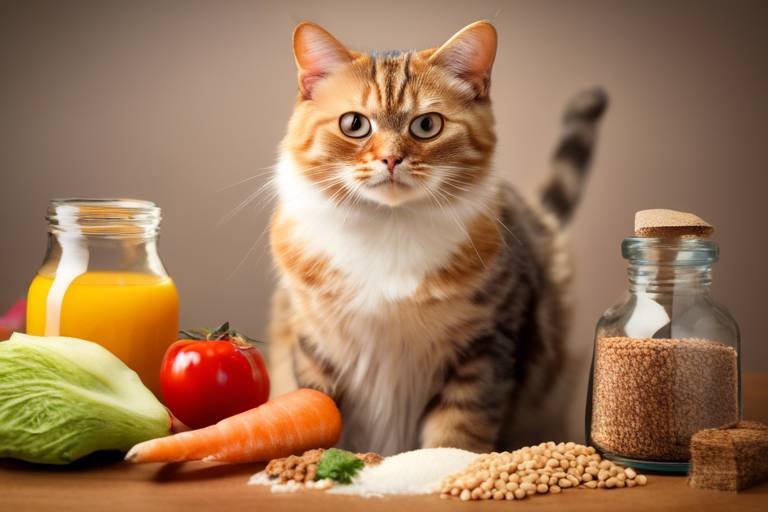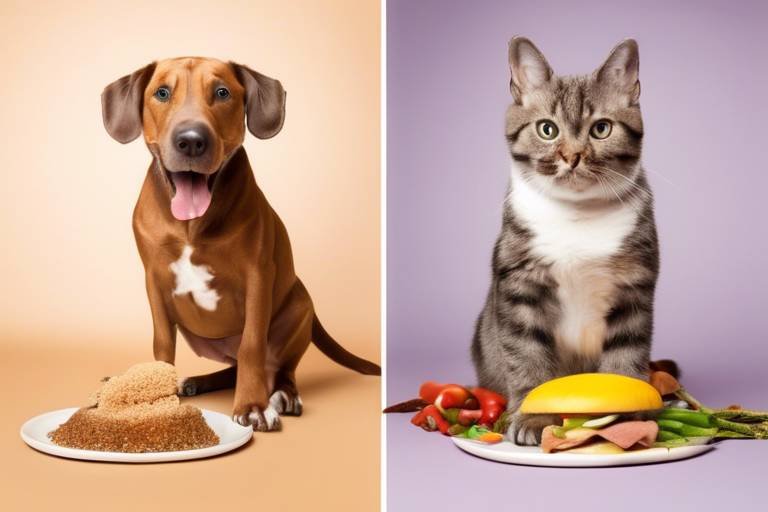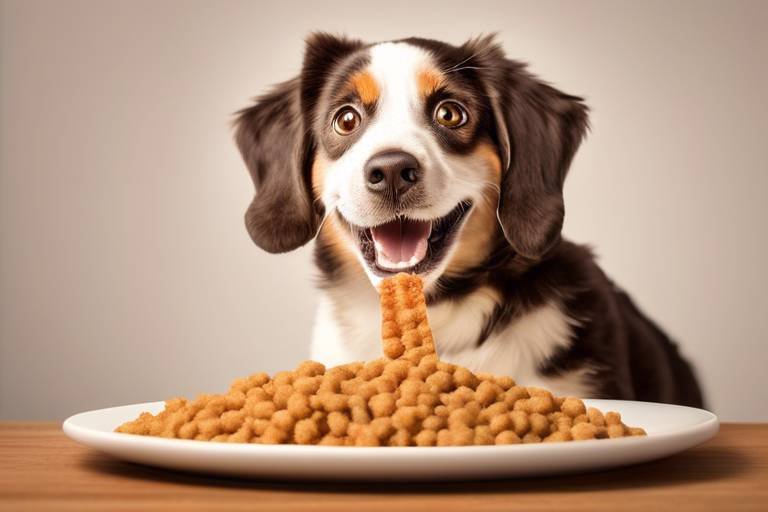The Role of Enrichment in Your Pet's Diet
When we think about our pets, we often focus on their physical health—what they eat, how much they exercise, and whether they’re getting enough vet check-ups. However, there's a crucial aspect that many pet owners overlook: enrichment. Enrichment is not just a fancy term; it refers to activities and experiences that enhance your pet's quality of life by providing mental stimulation and promoting overall well-being. Just like us, pets thrive when they're engaged and challenged. So, let's dive into how enrichment can transform your pet's diet and lifestyle!
Imagine a world where your dog or cat is not just a couch potato but an active participant in their environment. Enrichment can turn mealtime into an adventure, making it more than just a routine chore. Think about it: instead of simply pouring kibble into a bowl, you could use interactive feeding toys that require your pet to solve a puzzle to get their food. This not only makes mealtime exciting but also encourages them to use their brains, which is essential for their mental health.
Moreover, enrichment can help alleviate common behavioral issues that arise from boredom. Pets, much like children, can become restless and mischievous when they're not mentally stimulated. By incorporating enrichment into their daily routine, you can prevent problems such as excessive barking, scratching, or even destructive chewing. It’s about creating a fulfilling environment that caters to their natural instincts and needs.
The benefits of enrichment are vast and varied. For instance, it can improve your pet's cognitive function, reduce anxiety, and even enhance their physical health by keeping them active. In essence, enrichment is a holistic approach to pet care that acknowledges the emotional and mental needs of our furry friends. So, whether you have a curious kitten or a playful puppy, understanding the role of enrichment in their diet is essential for fostering a happy, healthy life.
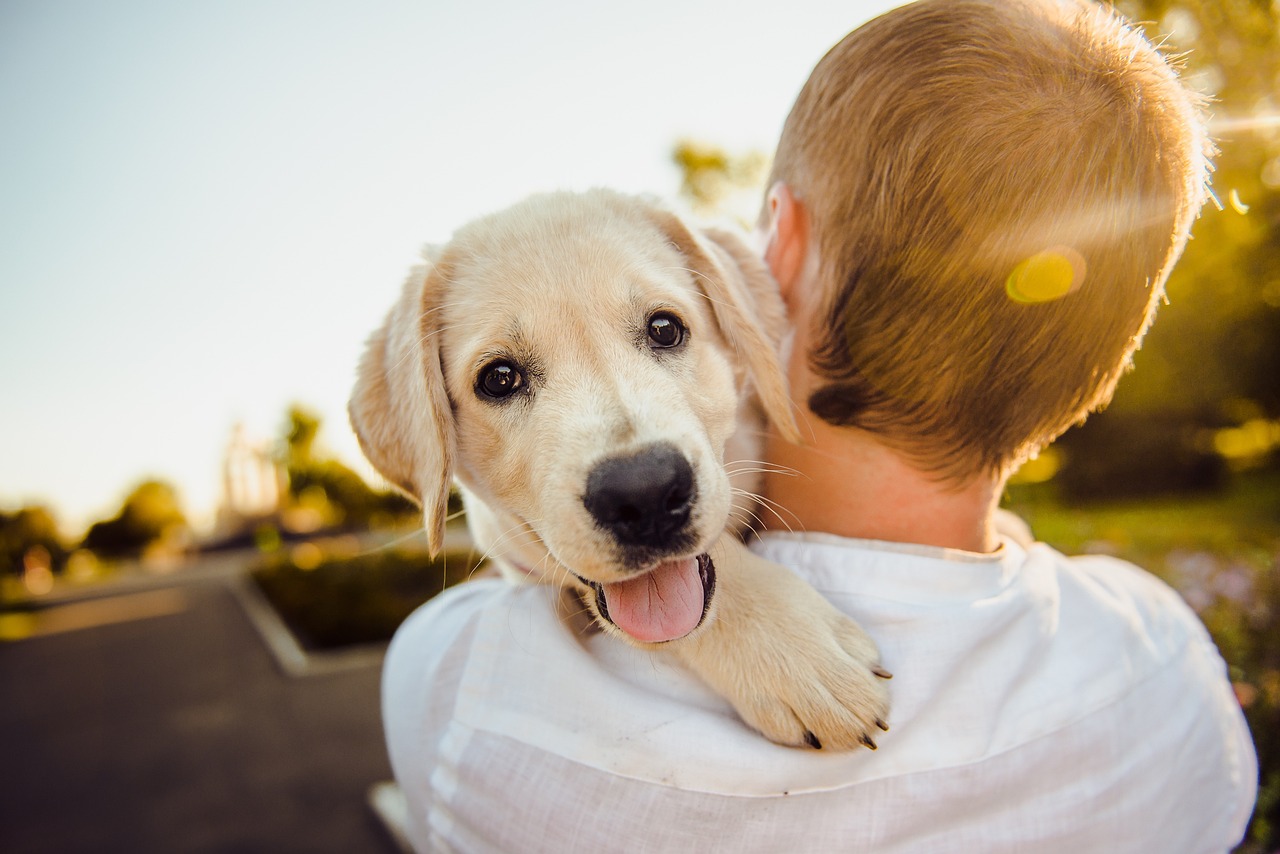
Understanding Pet Nutrition
When it comes to our furry friends, understanding their nutritional needs is as important as knowing how to give them belly rubs. Just like humans, pets require a balanced diet to thrive, and this includes a variety of essential nutrients. These nutrients can be broken down into several key categories: proteins, fats, carbohydrates, vitamins, and minerals. Each of these plays a unique role in maintaining your pet's health, energy levels, and overall well-being.
Let's talk about proteins first. They are crucial for building and repairing tissues, and they also play a significant role in producing enzymes and hormones. Pets that are active or in their growth stages require a higher protein intake. On the other hand, fats are essential for energy and help in the absorption of certain vitamins. Just like how we enjoy a little butter on our popcorn, pets also need fats for a shiny coat and healthy skin.
Now, you might wonder where carbohydrates fit into this picture. While not as critical as proteins or fats, carbohydrates provide a quick source of energy and can be beneficial for digestive health. Think of them as the fuel that keeps your pet's engine running smoothly. Vitamins and minerals, meanwhile, are like the tiny superheroes in your pet's diet, supporting various bodily functions, from bone health to immune system support.
But here’s where enrichment comes into play. Just providing these nutrients isn't enough; it's essential to make sure your pet is mentally engaged with their food. This is where the idea of enrichment shines. Enrichment activities can complement a pet's nutritional needs by making mealtime a stimulating experience. For instance, instead of simply pouring kibble into a bowl, you could use a puzzle feeder that requires your pet to think and work for their food. This not only slows down their eating but also keeps their mind sharp.
Incorporating enrichment into your pet's diet can lead to a happier, healthier life. Imagine if every meal was an adventure! By understanding your pet's nutritional needs and pairing them with engaging activities, you're not just feeding them; you're enhancing their quality of life.
| Nutrient | Function | Sources |
|---|---|---|
| Proteins | Tissue repair, enzyme production | Meat, fish, eggs |
| Fats | Energy supply, vitamin absorption | Fish oil, flaxseed oil, chicken fat |
| Carbohydrates | Quick energy, digestive health | Grains, vegetables, fruits |
| Vitamins | Support bodily functions | Fruits, vegetables, supplements |
| Minerals | Bones, teeth, metabolic processes | Meat, dairy, leafy greens |
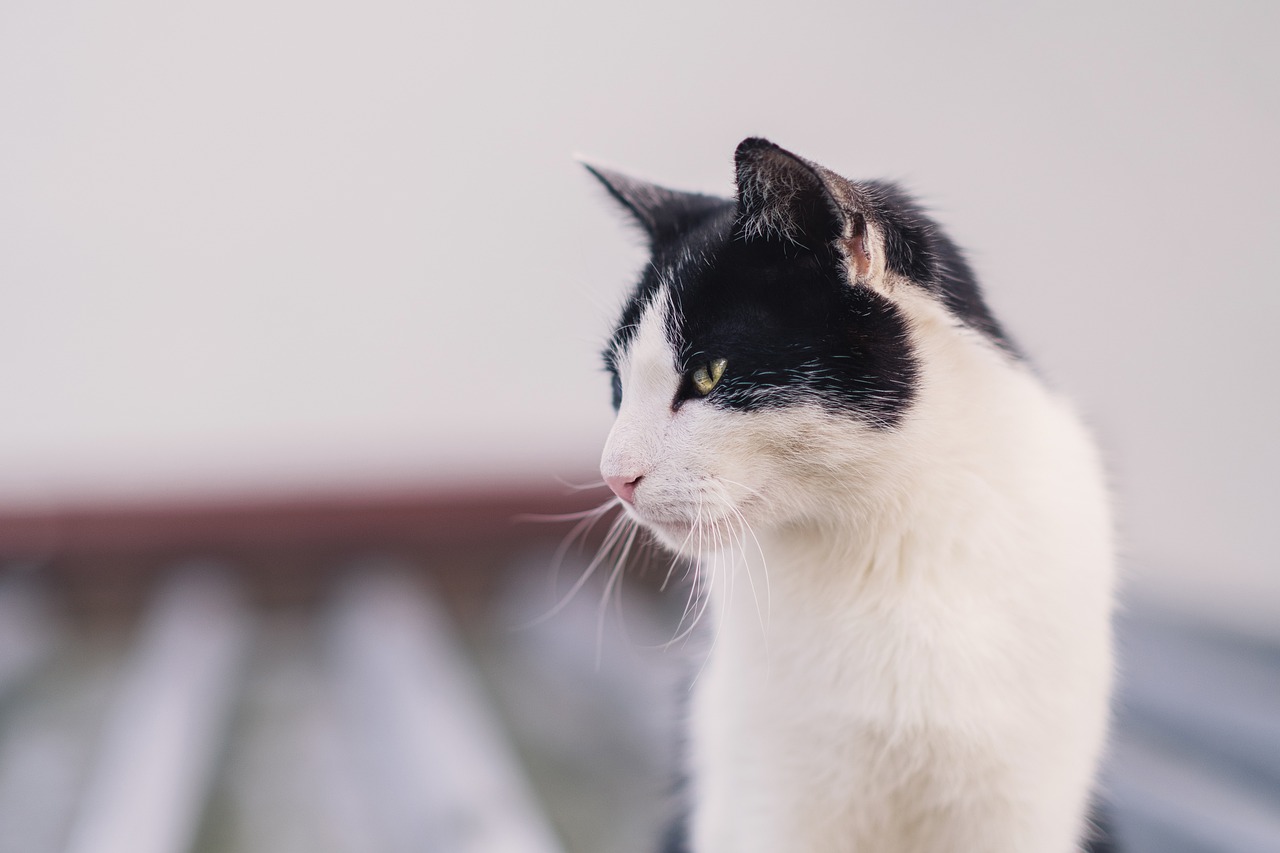
The Importance of Mental Stimulation
Mental stimulation is not just a buzzword in the pet care world; it’s a vital component of your furry friend’s overall well-being. Just like humans, pets can experience boredom, which can lead to a host of behavioral issues. Imagine being stuck in a room with nothing to do—how would that feel? Your pet experiences the same frustration when they lack mental engagement. By incorporating enrichment activities into their daily routine, you can help prevent these issues and promote a happier, healthier pet.
So, what exactly does mental stimulation entail? It encompasses a variety of activities that challenge your pet’s mind and encourage them to think critically. This could range from simple games to more complex problem-solving tasks. When pets engage in these activities, they not only stave off boredom but also enhance their cognitive abilities. Think of it as a workout for their brains! Just as we need to exercise our bodies, pets need to exercise their minds.
Research has shown that pets who receive regular mental stimulation are less likely to develop anxiety and destructive behaviors. For example, dogs that are left alone for long periods without any mental engagement may resort to chewing furniture or barking excessively. On the flip side, pets that participate in enriching activities tend to be more relaxed and well-adjusted. In fact, studies indicate that pets with enriched environments exhibit lower stress levels and better overall health.
Here are some examples of how you can incorporate mental stimulation into your pet’s life:
- Puzzle Toys: These toys challenge your pet to figure out how to get to a treat, keeping them engaged for longer periods.
- Training Sessions: Teaching your pet new tricks or commands is a fantastic way to stimulate their mind while also strengthening your bond.
- Interactive Games: Activities like hide-and-seek or fetch with a twist can make playtime more mentally engaging.
It’s essential to remember that mental stimulation should be tailored to your pet’s individual needs and preferences. Some pets may thrive on problem-solving tasks, while others might enjoy sensory experiences, such as exploring new environments or interacting with different textures and smells. Knowing your pet’s personality will help you choose the right activities that will truly engage them.
In conclusion, the importance of mental stimulation for pets cannot be overstated. By providing your furry companions with the tools they need to engage their minds, you are contributing to their happiness and emotional health. Remember, a mentally stimulated pet is a happy pet, and a happy pet means a happier household overall!
Q: How often should I provide mental stimulation for my pet?
A: Ideally, you should include some form of mental stimulation in your pet's daily routine. This could be through play, training, or interactive toys. Even short sessions can be beneficial!
Q: Are there specific toys recommended for mental stimulation?
A: Yes! Look for puzzle toys, treat-dispensing toys, or interactive games that require your pet to think and problem-solve. Always choose toys that are suitable for your pet’s size and chewing habits.
Q: Can mental stimulation help with behavioral issues?
A: Absolutely! Many behavioral issues stem from boredom and lack of engagement. Providing mental stimulation can significantly reduce these problems by keeping your pet occupied and satisfied.
Types of Enrichment Activities
When it comes to enhancing your pet's life, enrichment activities play a pivotal role. Think of enrichment as a mental workout for your furry friends, helping them stay sharp and engaged. Various activities can cater to the unique needs of different pets, ensuring that their minds and bodies are stimulated. For instance, puzzle toys are a fantastic way to challenge your pet's problem-solving skills while rewarding them with treats. These toys come in various forms, from simple treat-dispensing balls to complex puzzles that require multiple steps to unlock the goodies inside.
Another exciting option is interactive feeding. Instead of simply pouring food into a bowl, you can make mealtime a fun and engaging experience. Techniques like slow feeders or food puzzles not only slow down their eating but also encourage them to think critically about how to access their food. Imagine your pet's delight as they work through a maze of obstacles to reach their favorite kibble!
Moreover, sensory experiences are incredibly enriching for pets. These involve exposing them to new sights, sounds, and smells, which can be as simple as a walk in the park or a trip to a dog-friendly café. Outdoor exploration allows pets to engage with their environment, providing them with a rich tapestry of experiences that can stimulate their senses. Whether it's the rustle of leaves, the scent of a new flower, or the sight of squirrels darting about, each outing is an adventure waiting to happen.
In addition to these methods, consider incorporating playtime with toys that challenge your pet physically and mentally. Toys that mimic prey, such as feather wands for cats or squeaky toys for dogs, can ignite their natural instincts and encourage healthy play. Furthermore, rotating toys regularly can keep your pet's interest piqued, as they won't get bored with the same old options.
It's also essential to remember that social interactions can be a form of enrichment. Organizing playdates with other pets or enrolling in group classes can provide your pet with the opportunity to socialize, learn new skills, and engage in healthy competition. This interaction not only helps in building their confidence but also strengthens their emotional well-being.
Ultimately, the key to effective enrichment is variety. Mixing different types of activities ensures your pet remains engaged and stimulated. By observing their reactions and preferences, you can tailor enrichment activities to suit their individual needs. This way, you'll not only keep boredom at bay but also enhance their overall quality of life.
- What are some signs that my pet needs more enrichment? Look for signs of boredom, such as destructive behavior, excessive barking, or lethargy. If your pet seems disinterested in their usual activities, it might be time to introduce new enrichment options.
- How often should I change my pet's enrichment activities? It's a good idea to rotate activities every few weeks or whenever you notice your pet losing interest. Keeping things fresh will keep them engaged and excited.
- Can enrichment activities help with behavioral issues? Yes! Providing mental and physical stimulation can significantly reduce behavioral problems caused by boredom or excess energy.
- Are there enrichment activities suitable for older pets? Absolutely! Look for low-impact activities that cater to their physical abilities, such as gentle puzzle toys or sensory experiences that don’t require much movement.
Interactive Feeding Techniques
When it comes to feeding our pets, we often think about the nutritional value of the food we choose, but have you ever considered how the way we feed them can impact their overall well-being? are a fantastic way to make mealtime not only nutritious but also engaging and stimulating for your furry friends. These methods encourage pets to use their brains and bodies, turning what is often a mundane routine into an exciting challenge.
One popular method is the use of slow feeders. These specially designed bowls have built-in obstacles that prevent pets from gulping down their food too quickly. Not only does this slow down their eating, which can help with digestion, but it also transforms mealtime into a scavenger hunt! Imagine your dog navigating around the barriers to reach their kibble—it's like a mini obstacle course right in your kitchen.
Another engaging option is food puzzles. These toys require pets to solve a problem to access their food, providing both mental stimulation and a rewarding experience. For example, some puzzles require pets to push, nudge, or roll the toy to release treats. This not only keeps them entertained but also mimics the natural hunting behavior, tapping into their instincts and keeping their minds sharp.
Additionally, incorporating interactive feeding mats can be a game-changer. These mats are designed with various textures and hiding spots for food, encouraging pets to sniff out their meals. Just like a treasure hunt, it engages their sense of smell and provides a satisfying challenge. This type of feeding technique is especially beneficial for dogs and cats that may need a little extra motivation to eat or those that tend to eat too quickly.
To sum it up, interactive feeding techniques not only enhance your pet's dining experience but also contribute to their mental and physical health. By turning mealtime into a fun and interactive event, you can help prevent boredom and the behavioral issues that often accompany it. So, why not give your pet's mealtime a makeover? You'll be amazed at the difference it can make!
- What are interactive feeding techniques?
Interactive feeding techniques involve using specialized bowls, toys, or mats that require pets to engage in problem-solving to access their food, turning mealtime into a stimulating activity.
- How do slow feeders benefit my pet?
Slow feeders help prevent pets from eating too quickly, which can reduce the risk of choking and digestive issues, while also providing mental stimulation.
- Can all pets benefit from interactive feeding?
Yes! Most pets, including dogs and cats, can benefit from interactive feeding techniques, as these methods cater to their natural instincts and provide mental engagement.
- How do I choose the right interactive feeding tool for my pet?
Consider your pet's size, eating habits, and preferences. Start with simple puzzles or slow feeders and observe how your pet interacts with them before moving on to more complex options.
Outdoor Exploration and Play
Imagine the thrill of stepping outside with your furry friend, the fresh air filling your lungs, and the world bursting with new scents and sounds. are not just activities; they are vital components of your pet's enrichment routine. Just like a child benefits from playing outside, your pet will thrive when given the opportunity to explore the great outdoors. It’s an adventure that awakens their senses, stimulates their minds, and keeps them physically fit.
When you take your pet outside, they encounter a myriad of experiences that indoor play simply cannot replicate. From the rustle of leaves to the chirping of birds, every moment outdoors is a chance for your pet to engage with their environment. This kind of stimulation is essential for their mental health. For instance, dogs love to sniff around, and this behavior is not just a pastime; it’s how they gather information about their world. Cats, on the other hand, can benefit from outdoor exploration by climbing trees or simply lounging in the sun, soaking up the warmth and observing their surroundings.
Outdoor play also provides an excellent opportunity for exercise, which is crucial for maintaining a healthy weight and preventing obesity-related issues. Activities like fetching a ball, running through an open field, or even a simple walk around the block can significantly improve your pet's physical condition. Regular physical activity helps to build strong muscles, improve cardiovascular health, and enhance overall well-being.
Consider incorporating a variety of outdoor activities into your pet's routine. Here are a few ideas:
- Hiking: Find pet-friendly trails where your dog can explore new terrains while you enjoy the scenery.
- Playdates: Organize playdates with other pets. Social interaction can be incredibly beneficial for your pet's emotional health.
- Agility courses: Set up a simple agility course in your backyard to challenge your pet physically and mentally.
Moreover, outdoor exploration is a fantastic way to strengthen the bond between you and your pet. Sharing experiences, whether it’s a leisurely stroll or an energetic game of fetch, creates lasting memories and enhances your relationship. Just like humans, pets thrive on companionship and shared experiences, making outdoor adventures a perfect way to nurture that connection.
In conclusion, the benefits of outdoor exploration and play for your pet are immense. It’s not just about physical exercise; it’s about mental stimulation, social interaction, and emotional well-being. So, grab that leash, head to the nearest park, and let your pet discover the wonders of the outdoors. You’ll both be glad you did!
Q: How often should I take my pet outside for exploration?
A: Ideally, you should aim for daily outdoor time. Even short walks can be beneficial. The key is consistency and variety in the activities you offer.
Q: Is outdoor play safe for all pets?
A: While most pets enjoy outdoor play, always consider their individual needs and health conditions. For example, older pets may require gentler activities, while younger pets may enjoy more vigorous play.
Q: What should I do if my pet is scared of the outdoors?
A: Gradually introduce your pet to the outdoors. Start with short, calm sessions and reward them for positive behavior. Over time, they may become more comfortable with the environment.
Q: Can I take my cat outside?
A: Yes, you can take your cat outside, but always supervise them. Consider using a harness or leash for safety, or create a secure outdoor enclosure where they can explore without risk.
Benefits of Social Interaction
When it comes to our beloved pets, social interaction is not just a luxury; it's a necessity! Just like humans thrive on social connections, our furry friends do too. Imagine a puppy playing with its littermates or a cat lounging with its feline friends; these interactions are crucial for their emotional and psychological well-being. Socialization helps pets develop essential skills, enhances their confidence, and can even prevent behavioral issues down the line.
Engaging with other pets and humans can provide a wealth of benefits. For instance, pets that regularly socialize tend to exhibit better behavior and are less likely to experience anxiety or aggression. They learn to read social cues, which is vital for their interactions with other animals. Think of it as a social school where they pick up on the nuances of body language and vocalizations, making them more adaptable and well-rounded companions.
Moreover, social interactions can significantly enhance a pet's quality of life. Consider the joy a dog feels when it meets new friends at the dog park or the excitement a cat experiences during a playdate with another feline. These moments not only provide fun but also stimulate their minds and keep them physically active. In fact, pets that engage in regular social activities are often healthier and happier, leading to a longer, more fulfilling life.
So, what are some ways to boost your pet's social interaction? Here are a few ideas:
- Arrange playdates with other pets in your area.
- Enroll your dog in group training classes.
- Visit dog parks or pet-friendly events.
- Consider pet daycare services for daytime socialization.
In addition to enhancing their social skills, these interactions can help prevent boredom. A bored pet can lead to destructive behaviors, such as chewing furniture or excessive barking. By providing opportunities for social engagement, you not only enrich their lives but also create a more harmonious home environment.
Ultimately, the benefits of social interaction for pets are profound and multifaceted. From improved emotional health to enhanced physical activity, socialization is an integral part of a well-rounded pet care routine. So, take the time to foster these connections, and watch your pet flourish!
Here are some common questions pet owners have regarding social interaction for their pets:
- How often should my pet socialize? Ideally, pets should have opportunities for social interaction several times a week, depending on their personality and comfort level.
- What if my pet is shy or aggressive? Gradual introductions in controlled environments can help. Consider consulting a professional trainer for advice tailored to your pet's needs.
- Are there specific breeds that require more social interaction? Yes, some breeds are naturally more social than others. Dogs like Labrador Retrievers and Golden Retrievers typically thrive on social interaction.
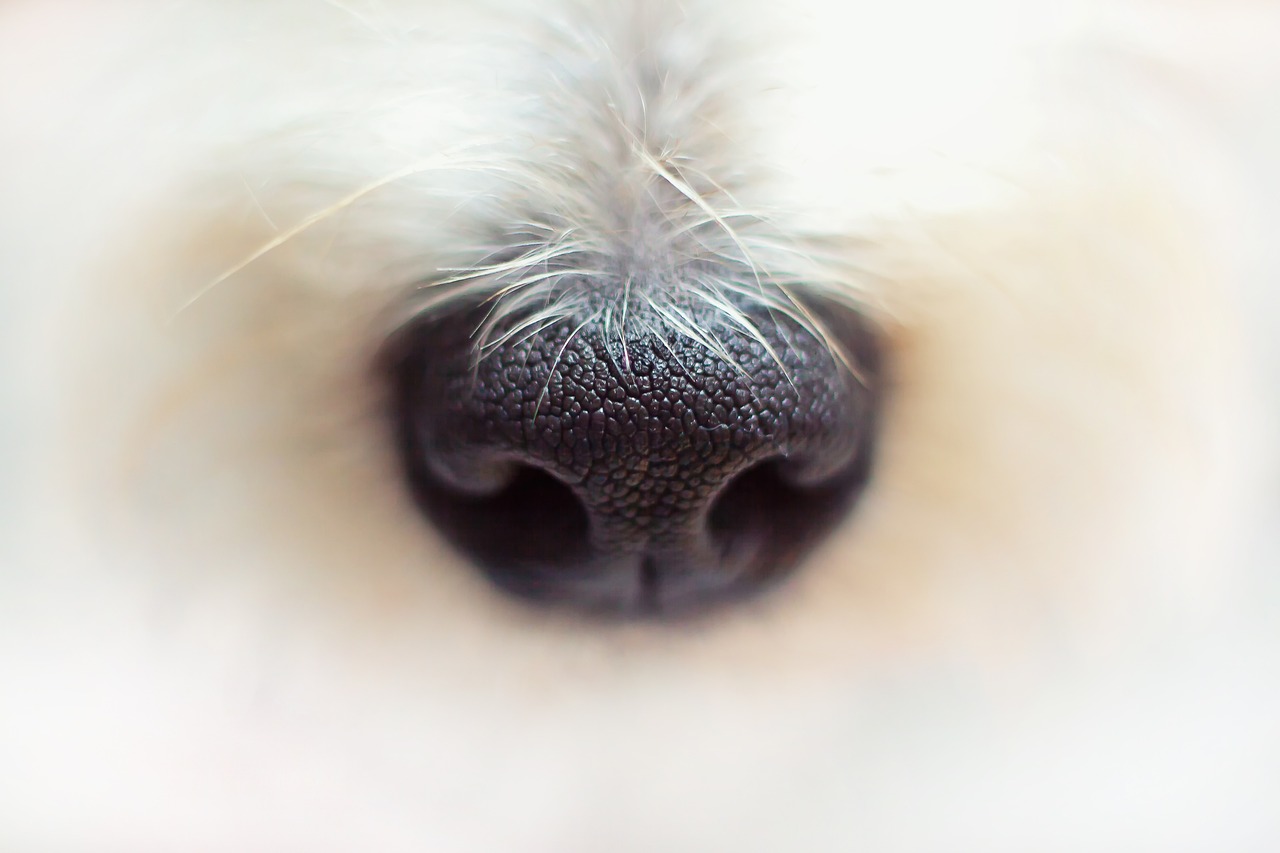
Choosing the Right Enrichment for Your Pet
When it comes to ensuring your furry friend leads a fulfilling life, choosing the right enrichment activities is paramount. Just like humans, pets have their own unique personalities, preferences, and needs. So, how do you determine what will truly make your pet wag its tail or purr with joy? Well, it begins with understanding your pet's individual quirks and behaviors. You wouldn't want to buy a ball for a cat that prefers to chase feathers, right?
Start by observing your pet. Watch how they interact with their toys, the environment, and even with you. Are they more inclined to play a game of fetch, or do they prefer to curl up with a good chew toy? This can give you a clue about what types of enrichment will be most appealing to them. For instance, if your dog loves to dig, consider providing a designated digging area filled with sand or soft soil. On the other hand, if your cat is a climber, investing in a tall cat tree could be a game-changer.
Another essential factor to consider is your pet's age and physical condition. Puppies and kittens are bursting with energy and curiosity, so they might thrive on more active forms of enrichment, such as agility training or interactive play sessions. In contrast, senior pets may require gentler activities that stimulate their minds without overexerting their bodies. For example, puzzle toys can challenge their intellect while being easy on their joints.
Here’s a quick guide to help you assess the right enrichment based on your pet's characteristics:
| Pet Type | Activity Type | Recommended Enrichment |
|---|---|---|
| Dog | Physical | Agility courses, fetch games |
| Cat | Exploratory | Interactive toys, climbing structures |
| Rabbit | Social | Playdates, gentle grooming |
| Bird | Cognitive | Foraging toys, puzzles |
Moreover, consider your pet's daily routine. Incorporating enrichment activities into their schedule can make a world of difference. Imagine how exciting it would be for your dog to sniff out treats hidden in the yard after a long day of lounging around! This not only breaks the monotony but also makes their day feel special and engaging.
Lastly, don’t forget to mix things up! Just like humans, pets can get bored with the same old routine. Regularly introducing new toys, activities, or even changing the environment can keep your pet's interest piqued. Rotate toys, explore new parks, or try different types of training exercises. Variety is the spice of life, after all!
In summary, choosing the right enrichment for your pet involves careful observation, understanding their unique needs, and being willing to adapt as they grow. By investing time and thought into their enrichment activities, you're not just enhancing their diet; you're enriching their lives and strengthening the bond you share.
- How often should I change my pet's enrichment activities? It's a good idea to rotate toys and activities every few weeks to keep your pet engaged and prevent boredom.
- Can I use human food for enrichment? Yes, but always ensure it's safe for your pet. For example, small pieces of fruits or vegetables can be used in puzzle toys.
- What if my pet doesn't seem interested in any enrichment? Keep trying different activities! Every pet is unique, and it may take some time to find what they truly enjoy.
Observing Your Pet's Behavior
Understanding your pet's behavior is like unlocking a secret code that reveals their preferences and needs. Just like humans, pets have their own unique personalities and quirks. By paying close attention to how they react to different activities, you can tailor enrichment options that truly resonate with them. For instance, does your dog wag its tail excitedly when you bring out a puzzle toy? Or does your cat pounce on a feather wand with the enthusiasm of a lion on the hunt? These reactions are not just cute; they are vital clues to what makes your furry friend tick.
When observing your pet, consider the following behaviors:
- Body Language: Is your pet relaxed or tense? A wagging tail might signal happiness in dogs, while a puffed-up tail in cats can indicate excitement or agitation.
- Vocalizations: Pay attention to the sounds your pet makes. A happy bark or a soft purr can signal enjoyment, while growls or hisses may indicate discomfort.
- Engagement Level: Notice how long your pet stays interested in an activity. If they lose interest quickly, it might be time to switch things up.
By observing these behaviors, you can gain insights that help you choose the right enrichment activities. For example, if your dog shows a keen interest in fetch but seems bored with traditional toys, consider introducing interactive fetch toys that require them to think and problem-solve. This not only keeps them engaged but also enhances their cognitive skills.
Keep in mind that pets, much like us, can have off days. They might not be in the mood for play or exploration every single day. It's essential to be flexible and responsive to their moods. If you notice your pet is particularly lethargic or disinterested, it could be a sign they need a break or perhaps a different type of stimulation altogether. Regularly changing up the activities you provide can help keep things fresh and exciting.
Another effective way to observe your pet's preferences is to introduce new activities gradually. Start with one new toy or game at a time and watch how they respond. This method not only helps you gauge their interest but also avoids overwhelming them with too many options at once. Over time, you’ll build a repertoire of activities that resonate with your pet, ensuring they remain mentally stimulated and happy.
In conclusion, observing your pet's behavior is an ongoing journey that deepens your bond and enhances their quality of life. By being attentive and responsive to their needs, you can create an enriching environment that caters to their unique personality, ensuring they thrive both mentally and physically.
Q: How can I tell if my pet is bored?
A: Signs of boredom can include excessive barking or meowing, destructive behavior, or a lack of interest in play. Keeping an eye on these signs can help you gauge their mental state.
Q: What types of enrichment activities are best for my pet?
A: The best activities depend on your pet's preferences. Experiment with puzzle toys, interactive feeding, and outdoor exploration to find what they enjoy most.
Q: How often should I change enrichment activities?
A: It's a good idea to rotate activities regularly to keep your pet engaged. Every week or two, introduce new toys or games to maintain their interest.
Q: Can I use enrichment activities for older pets?
A: Absolutely! Older pets can benefit from mental stimulation just as much as younger ones. However, be mindful of their physical limitations and adjust activities accordingly.
Adapting Enrichment for Different Life Stages
When it comes to ensuring your pet's happiness and well-being, adapting enrichment activities to their life stage is crucial. Just like humans, pets go through various phases in life, and their needs change accordingly. For instance, a playful puppy has different requirements compared to a senior dog who may be more laid-back. Understanding these differences can help you create a tailored enrichment plan that keeps your furry friend engaged and happy.
Starting with puppies, these little bundles of energy require a lot of mental and physical stimulation. They are naturally curious and eager to explore the world around them. To cater to their needs, you can introduce activities that promote socialization and basic training. Simple games like fetch or hide-and-seek can be both fun and educational. Additionally, interactive toys that dispense treats can keep them busy while also teaching them problem-solving skills. Puppies benefit immensely from social playdates with other dogs, as this helps them develop important social skills.
As your pet transitions into the adult stage, their energy levels may stabilize, but their need for mental stimulation remains high. Adult pets often thrive on more challenging enrichment activities. Consider incorporating puzzle toys that require them to think critically or engaging in agility training sessions. These activities not only provide mental stimulation but also promote physical health. Regular outdoor adventures, such as hiking or exploring new parks, can also enrich their lives by exposing them to different environments and scents.
When it comes to senior pets, the focus should shift slightly. While they still need mental stimulation, it’s essential to consider any physical limitations they may have. Gentle activities like scent work or low-impact puzzle toys can keep their minds sharp without overexerting them. Offering calming enrichment options, such as soft bedding or relaxing music, can also improve their quality of life. Remember, senior pets may appreciate shorter, more frequent sessions of enrichment rather than long, strenuous activities.
To summarize, here’s a quick table outlining the enrichment needs for different life stages:
| Life Stage | Recommended Activities | Key Focus |
|---|---|---|
| Puppy | Socialization, basic training, interactive toys | Exploration and learning |
| Adult | Puzzle toys, agility training, outdoor adventures | Challenge and engagement |
| Senior | Scent work, low-impact puzzles, calming environments | Comfort and mental stimulation |
Ultimately, the key to successful enrichment is to observe your pet and adjust activities based on their reactions and preferences. By doing so, you create a dynamic environment that caters to their evolving needs, ensuring they remain happy and healthy throughout their lives. Remember, enrichment is not just about physical activity; it’s about creating a fulfilling lifestyle that nurtures your pet’s mind, body, and spirit.
Q: How often should I change my pet's enrichment activities?
A: It's a good idea to rotate enrichment activities every few weeks to keep your pet engaged and prevent boredom. Pay attention to their interests and adjust accordingly.
Q: Can I use the same enrichment activities for different pets?
A: While some activities may be suitable for multiple pets, it's essential to consider each pet's individual needs, preferences, and physical abilities when selecting enrichment activities.
Q: What are some signs that my pet is bored?
A: Signs of boredom can include destructive behavior, excessive barking, or changes in appetite. If you notice these signs, it may be time to introduce new enrichment activities.
Frequently Asked Questions
- What is pet enrichment and why is it important?
Pet enrichment involves activities and tools that stimulate your pet mentally and physically. It's important because it helps prevent boredom, reduces behavioral issues, and enhances your pet's overall well-being. Just like us, pets thrive when they have engaging experiences!
- How can I tell if my pet needs more enrichment?
If your pet seems restless, exhibits destructive behavior, or appears disinterested in their usual activities, they might be craving more enrichment. Look for signs like excessive barking, digging, or even weight gain due to inactivity. Think of it as a pet's way of saying, "Hey, I need some fun!"
- What are some easy enrichment activities I can do at home?
There are plenty of simple activities you can try! Consider interactive toys that dispense treats, hide-and-seek games, or even DIY obstacle courses. You could also rotate your pet's toys to keep things fresh. It's like giving them a new toy without spending a dime!
- Can enrichment help with my pet's anxiety?
Absolutely! Enrichment can help distract your pet from anxiety triggers and provide them with a sense of purpose and fulfillment. Activities that engage their mind, like puzzle toys or training exercises, can be particularly beneficial. Think of it as a mental workout that helps calm their nerves!
- How do I choose the right enrichment activities for my pet?
Start by observing your pet's behavior and preferences. Do they enjoy chasing things, solving puzzles, or exploring? Tailor activities to match their interests and energy levels. It's like picking the perfect playlist for a road trip—choose what gets them excited!
- Is outdoor play necessary for my pet's enrichment?
Outdoor play is a fantastic way to enrich your pet's life! It exposes them to new sights, sounds, and smells, which can be incredibly stimulating. Regular outdoor adventures can boost their mood and overall health, making it a vital part of their enrichment routine.
- How can I adapt enrichment for my pet's life stage?
Different life stages require different types of enrichment. For puppies, focus on socialization and basic training. Adults benefit from more challenging activities like agility courses, while seniors may need gentler enrichment, like puzzle toys or leisurely walks. It’s all about keeping them engaged and happy at every age!


